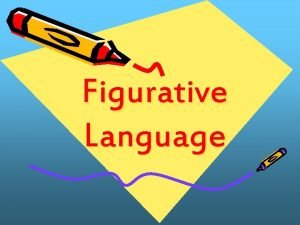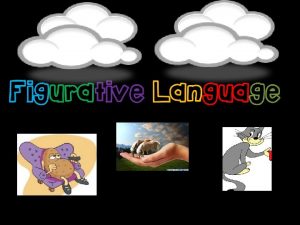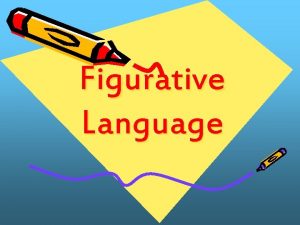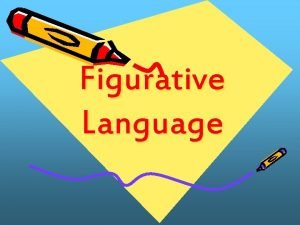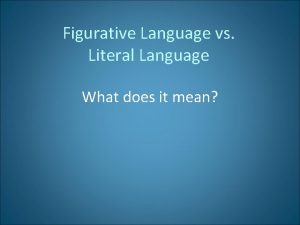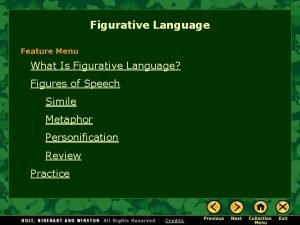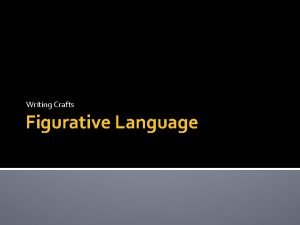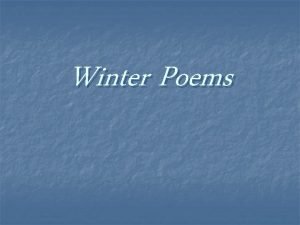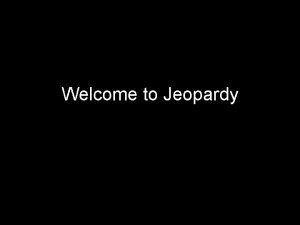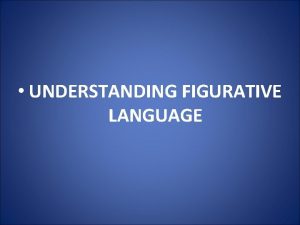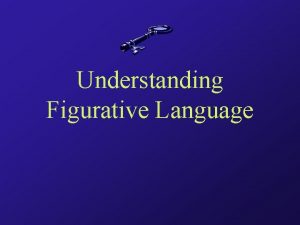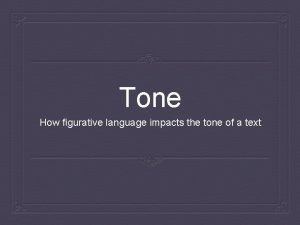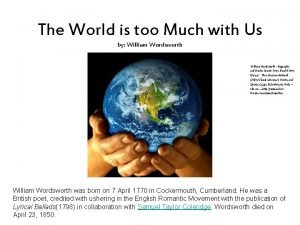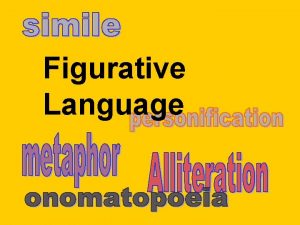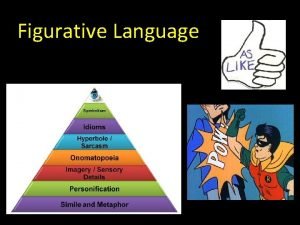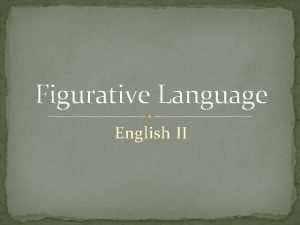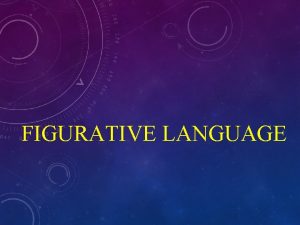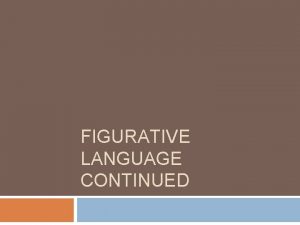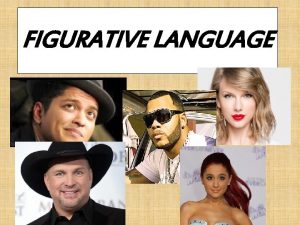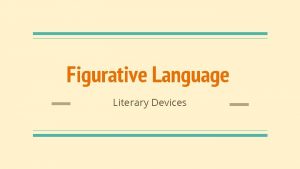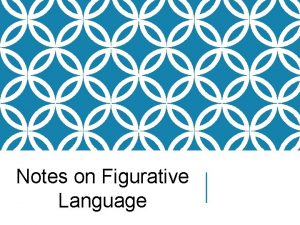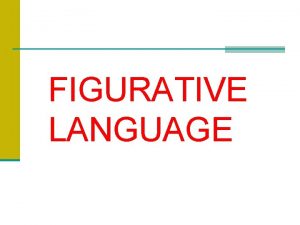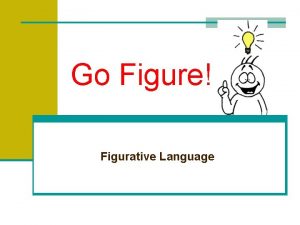FIGURATIVE LANGUAGE Figurative Language Figurative language is language














- Slides: 14

FIGURATIVE LANGUAGE

Figurative Language ◦ Figurative language is language that uses words or expressions with a meaning that is different from the literal interpretation. When a writer uses literal language, he or she is simply stating the facts as they are. Figurative language, in comparison, uses exaggerations or alterations to make a particular linguistic point.

Figurative Language ◦ Figurative language is very common in poetry, but is also used in prose and nonfiction writing as well. ◦ There are many different types of figurative language. For example, it often includes the use of a specific type of word or word meaning:

Metaphor ◦ A metaphor is a comparison made between things which are essentially not alike. ◦ Examples: ◦ “The snow is a white blanket. ” ◦ “The hospital was a refrigerator. ” ◦ “The classroom was a zoo. ”

Simile ◦ Simile: A simile is like a metaphor and often uses the words like or as. ◦ Examples: ◦ “Jamie runs as fast as the wind. ” ◦ “Your teeth are like pearls. ” ◦ “Her cheeks are red like a rose. ”

Personification ◦ When something that is not human is given humanlike qualities, this is known as personification. ◦ Examples: ◦ “The leaves danced in the wind on the cold October afternoon. ” ◦ “The fire swallowed the entire forest”.

Hyperbole ◦ Exaggerating, often in a humorous way, to make a particular point is known as hyperbole. ◦ Example: ◦ “My eyes widened at the sight of the mile-high ice cream cones we were having for dessert. ” ◦ “My grandmother is as old as the hills. ”

Symbolism ◦ Symbolism occurs when a noun which has meaning in itself is used to represent something entirely different. ◦ Example: ◦ Use an image of the American flag to represent patriotism and a love for one’s country. ◦ The dove is a symbol of peace.

Onomatopoeia ◦ When you name an action by imitating the sound associated with it, this is known as onomatopoeia. ◦ Example: ◦ “The bees buzz angrily when their hive is disturbed. ” ◦ “He looked at the roaring sky. ”

Idiom ◦ An idiom is an expression used by a particular group of people with a meaning that is only known through common use. ◦ Example: ◦ “Actions speak louder than words. ” ◦ “Barking up the wrong tree. ” ◦ Many idioms that are frequently used are also considered clichés.

Synecdoche ◦ A synecdoche is a figure of speech using a word or words that are a part to represent a whole. ◦ Examples: ◦ Referring to credit cards as "plastic". ◦ The term “coke” is a common synecdoche for all carbonated drinks.

Cliché ◦ A cliché is a phrase that is often repeated and has become kind of meaningless. ◦ Examples of a cliché is the expression: ◦ “Walk a mile in my shoes. ” ◦ “The quiet before the storm. ” ◦ “As brave as a lion” – a cliché to describe a very brave person

Assonance ◦ When you repeat a vowel sound in a phrase is it assonance. ◦ Examples: ◦ “True, I do like Sue. ’’ ◦ “ Men sell the wedding bells. ”

Metonymy ◦ A metonymy is a figure of speech where one thing is replaced with a word that is closely associated with it. ◦ Examples: ◦ using "Washington" to refer to the United States government. ◦ Crown - in place of a royal person. ◦ Dish - for an entire plate of food.
 Literal language
Literal language Figurative language comic
Figurative language comic Literal language vs figurative language
Literal language vs figurative language Literal vs figurative examples
Literal vs figurative examples Types of literal language
Types of literal language What's the difference between an idiom and a hyperbole
What's the difference between an idiom and a hyperbole Is figurative language a language feature
Is figurative language a language feature The tell tale heart figurative language
The tell tale heart figurative language Personification of a lake during winter
Personification of a lake during winter Language
Language Figurative language
Figurative language Essential questions about figurative language
Essential questions about figurative language Figurative language trashketball
Figurative language trashketball Figurative language
Figurative language The world is too much with us figurative language
The world is too much with us figurative language
